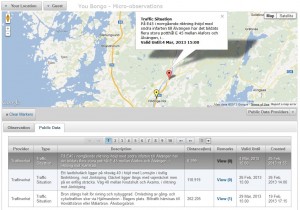
Open data is undergoing a paradigm change where the focus is shifting to user demand driven publication of data in machine-readable formats, with open standards and licenses that is appropriate for its application area. This is often refereed to as “liquid information” or “liquid data” which can be read about in this report from McKinsey’s 2013. The report address the potential value that can be achieved if standards, formats and metadata are functional for its intended use. Open data 2.0 is another emerging term which refers to data that is being made available based on demand and provides means for participation and collaboration, where users can report suggestions for improvement and provide feedback on flawed data. Continue reading “User demand driven and machine-readable open data”





